After seeing that my wireless speeds were much faster than the speeds I was getting over Ethernet, I decided to invest in some new cables. I didn’t know it before, but I saw while I was changing them out that my current cables were Cat 5e. While putting my network together, I had just been grabbing whatever cables I could find in my scrap drawers. Now I have Cat 8 cables and my speeds jumped from 7MB/s to an average of over 40MB/s. It’s a much bigger improvement than I expected, especially for such a small investment.
Cat8 is pointless with gigabit equipment as far as speed goes. Cat6 will do 10gig, you just had bad cables.
deleted by creator
100m is the spec max. More than that, you need a powered repeater (i.e. baby switch). And you won’t get 100m if you have bad cables.
I once saw a run in a cruise terminal, out of the cruise ship, down the gangway, along the terminal hallway, and through two more little switches just sitting on the floor next to an outlet. Not sure why they needed that run, but that’s what they did and it worked.
deleted by creator
Yes, I was agreeing with you. Although as I mentioned, it’s technically 100m, which is 328 feet and one inch. And the spec also allows up to 5m of patch cable on each end, which I don’t think I knew.
But that’s the spec target. Low-quality cable, physical damage, or environmental conditions like interference may reduce the actual max in practice. You might be able to push it with cat6 and up, but the spec still only says 100m.
Copper core versus copper clad aluminum is going to matter here too. Both will claim to hit the spec, but you’re more likely to get there with the expensive copper only.
Yeah and don’t forget good terminations. I’ve seen a lot of people not getting the speeds they could get just because they used cheap plugs/connectors.
deleted by creator
High quality cat 5e would have done the job.
Original cables must have been faulty.
deleted by creator
Yep. There was an assumption 20 years ago when common switches were 100Mbps and running cat5e that you’d have to upgrade cable to get the next speed tier, 1Gbps.
It propagated wildly, but was always incorrect. Cat5e was very much capable of gigabit Ethernet by design.
It was only beyond gig that you’d need cat6, and even then at short lengths 2.5/5/10Gbe has a good chance of working on cat5e anyway (but don’t do it).
You can get gigabit over 5e, you don’t need super expensive cables. That said I ran cat 6 through my whole house and am able to fully saturate the bus, about 115 MBps (920 Mbps) which accounts for the TCP overhead. I haven’t tried 2/5/10G on it bull I’ll probably upgrade in a few years, I don’t expect to have much trouble getting good speeds. Your biggest issue was you might not have had all the cable pairs in your wire, or your cables ends might have been crusty, or you could have had bad kinks in the wire causing packet loss, or some real absolute trash quality wire. In general, 5e and 6 are plenty for most people/situations to get good speeds (1Gb+)
Cat8 is not the benefit here. It’s all twisted pairs as any other CAT cable. You probably just had a shitty quality cable.
Cat8 is not the benefit here.
That is correct. Since we talk about lower then Gb speeds
It’s all twisted pairs as any other CAT cable. You probably just had a shitty quality cable.
Yes, but the CAT does not simply do nothing, shielding is probably the most distinguished factor on the CAT rating and it increases the signal integrity and therefore the max speed you can push across the cable. Saying “all just twisted pair” is just BS, or just try to get 10 Gb speeds on a CAT 5 on 100m long cable.
You’ve been using cheap cables.
Next step up is a JCAT: https://audiobacon.net/2019/11/02/the-jcat-signature-lan-a-1000-ethernet-cable/amp/
/s if not obvious.
I’d be interested to see if you swapped the cables back if your local interface negotiated to FE instead of GE. I wouldn’t be surprised to find that you’ve got a pair that’s not properly terminated or broken and dropping you down to 100Mbps.
Also learned this the hard way, when i was starting my “homelab” , I bought a box of (not knowingly that its bad) cheap CCA(copper clad alum) cat6 cables and im wondering why are my access points not negotiating to gigabit, turns out cca are trash and shouldn’t be used on POE or even on high speed trunks, learned my lesson now and swapped my cables to pure copper, they are more expensive like 100$ more expensive but at least they do the job.
CCA wasn’t probably your issue there, CCA is actually becoming the standard everywhere because copper is way too expensive and to be fair not needed with modern hardware.
You most likely issue with that CCA is the AWG size you picked, cheap cable is usually 24, 26 or even 28 AWG and those will be bad.
If you want PoE or anything gigabit or above you need to pick 23 AWG. This is considerably cheaper than full copper and it will work fine for the max. rated 100m. Either way, cheap 26 AWG should be able to deliver gigabit and PoE at short distances like 20 meters or so.
Another important thing is to make sure your terminations are properly done and the plugs are good. Meaning, no Cat5e connectors should be used, always use staggered ones:
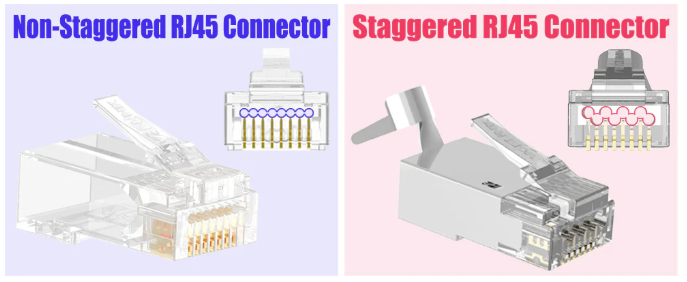
Thanks, I think I got 24awg cca before I swapped them to pure copper, and now I also think, I wanna re crimp all of my connectors using staggered ones lol
I’ve done my fair share of long runs of Cat6e 23 AWG with PoE and they all work fine and gigabit on distances like 100 meters or close. Sometimes even slightly above that.
Staggered will reduce the failure rate by a lot, specially if you’re into gigabit speeds or anything above it. Although I know from experience that you can get gigabit on non-staggered connectors it won’t always happen on the first try. On long distances the noise caused by having the wires side by side may also cause problems.
Btw, if you’ve small patch cables don’t use solid core for those, those should be stranded cables and they’ll be more flexible, less likely to break when bent and less prone to bad contacts.
CCA shouldn’t be used anywhere ever. It’s garbage cable for garbage people who will pinch a penny and end up spending ten times that in dealing with the issues and the eventual replacement.
It depends: https://lemmy.world/comment/11680250
I have stable ~950 MBit/s to the NAS with Cat5e. That’s ~115 MB/s. If that 40 is to a machine on the LAN, either there is some bottle neck at one of the ends, or there’s some problem with the cable to the RJ-45 jacks.
Ethernet speeds historically were measured in 10/100. In my past life I worked for an a small rural isp. And part of my learning I was taught that cat5 was 8 strands of wire, or 4 twisted pairs. I got very familiar with crimping patch cables. If one strand were cut a network card would negotiate down to its lowest speed and still work at 10mbps. Operating on 4 wire or two pairs. It’s possible with those numbers you had a bad connection, or a broken strand in the cable and it auto negotiated down to 10mbps. To this day I still crimp my own cables, and I own a cheap cable tester to make sure the crimps and cables are good.
I’ve a run of around 60 meters of old telephone cables (made out of copper, 4 wires) and I can get 100Mbps on those reliably. I used the old telephone infrastructure on the building to pass network from an apartment to the basement that way.
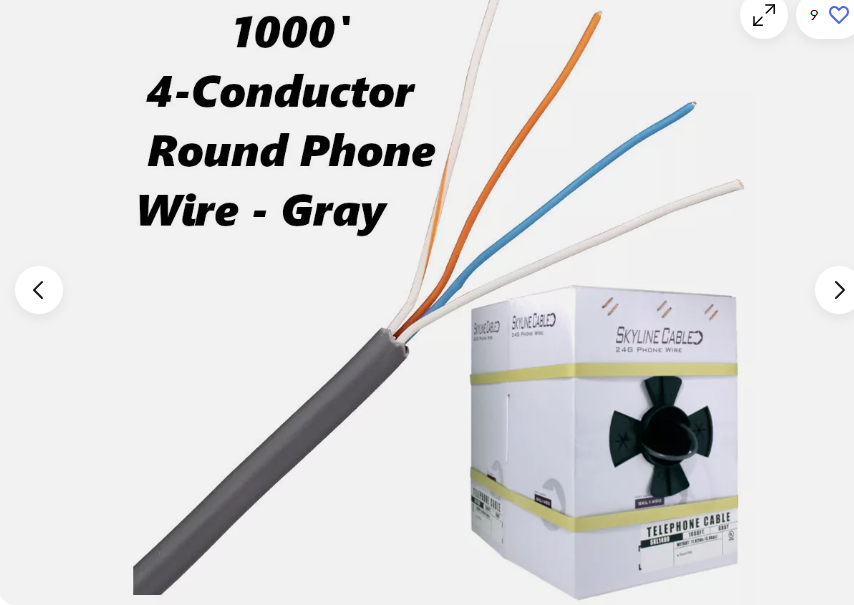
Not to spec on ethernet on any way, not even twisted pairs but they do work. Unfortunately I can’t replace the run with a proper Cat6 cable because there’s a section that I can’t find where it goes to, it just disappears on a floor and appears 2 floors bellow it inside the main telephone distribution box.
On the distribution box (that is already on the basement of the building) I’m plugging into the LSA connector that goes to the apartment:
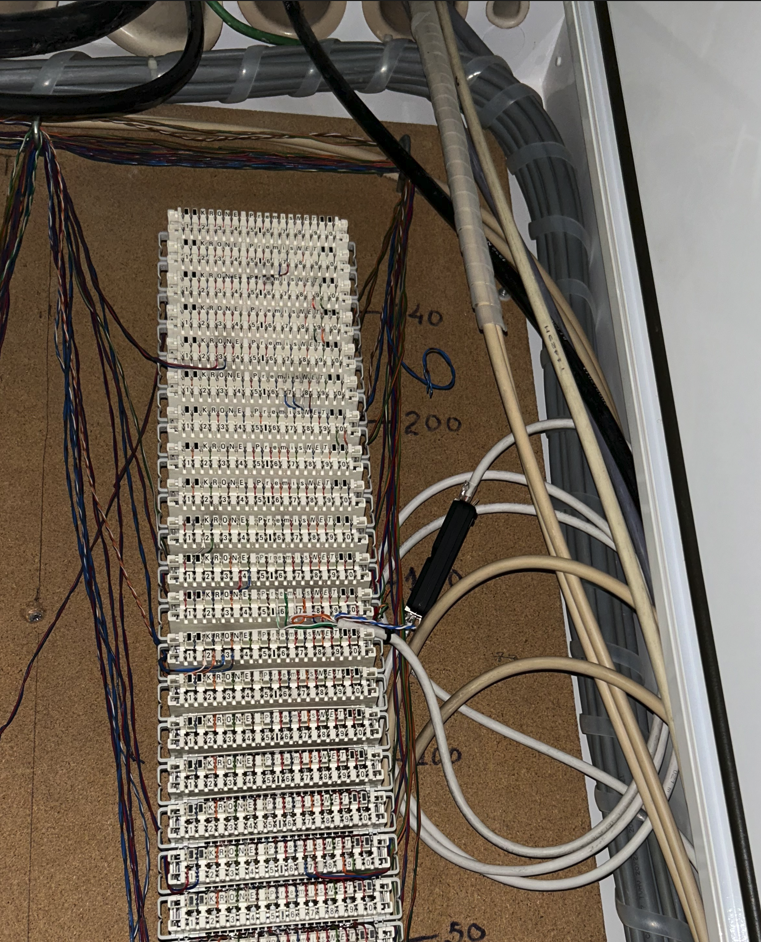
The black box you see there is a mikrotik gper that is essentially a PoE switch with only 2 ethernet ports so I can get over the 100m limitation of ethernet. I’m running a cat6 cable from there on metal cable trays for about another 90 meters until it reaches a storage unit 2 floors bellow ground.
Here’s a ping test from a machine sitting on the storage box to the router on the apartment:
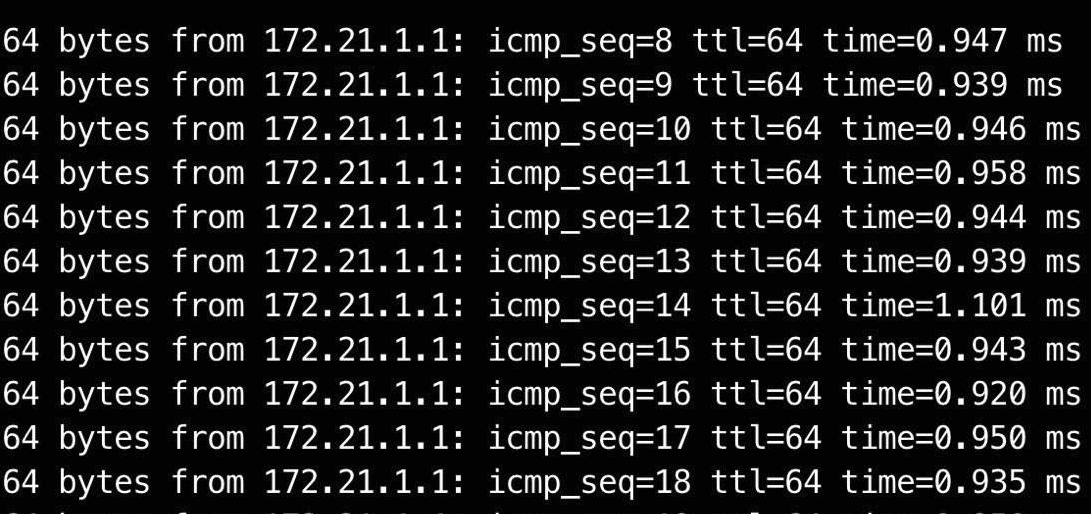
The router reports this as a 100M full-duplex connection:
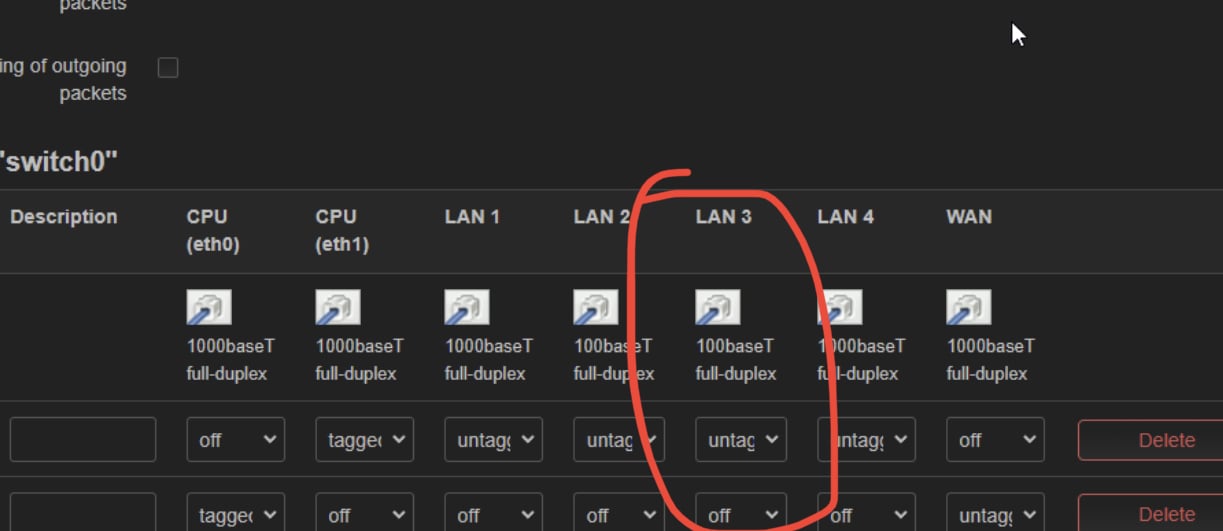
If anyone wants to try a setup like this, or just extend ethernet > 100m, it also worked fine with a cheap 5$ 100M switch from Aliexpress and a PoE injector + splitter.
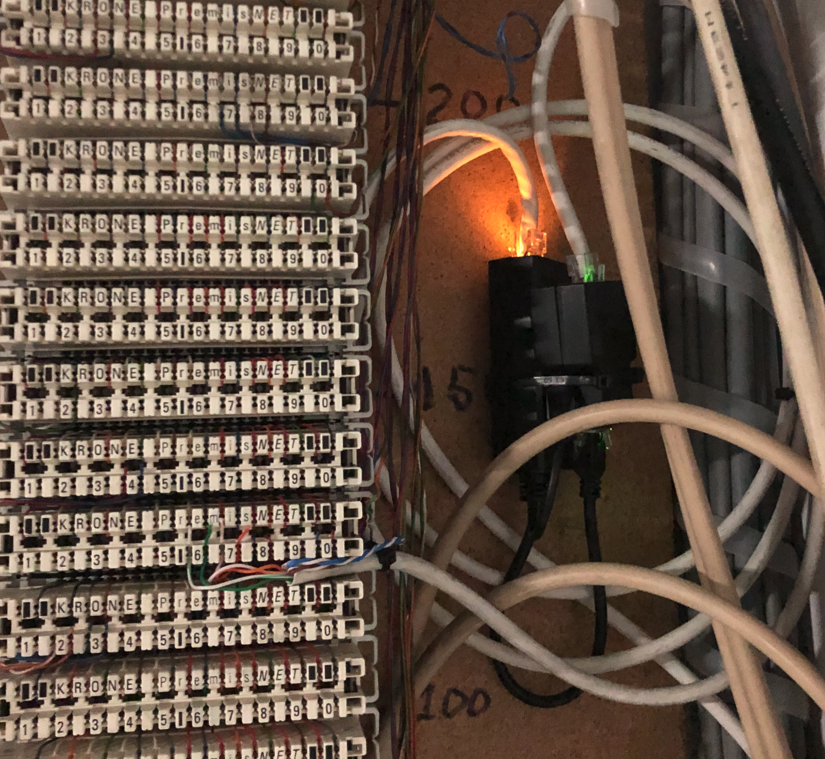
However I eventually got the mikrotik gper for free so I decided to replace it because it should be more reliable.


